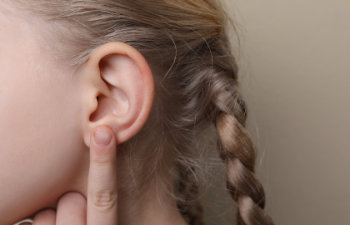Summer is the perfect time to dive into your favorite swimming pool, lake, or river to cool off and enjoy the sunshine. However, those refreshing swims can sometimes lead to an uncomfortable and painful condition known as swimmer’s ear or otitis externa. Understanding how swimming can cause ear infections and knowing when to seek medical care is crucial for maintaining your ear health during these hot summer months.
Swimmer’s ear is an infection of the outer ear canal, which runs from the eardrum to the outside of the head. It is often caused by water that remains in the ear after swimming, creating a moist environment that aids bacterial growth. The most common culprits are bacteria found in water and soil, which can enter the ear canal and multiply.
How Swimming Leads to Ear Infections
Excess water exposure from frequent swimming can break down the ear’s natural defense mechanisms. The ear canal has a thin layer of protective wax that helps to trap dirt and repel water. However, excessive moisture can strip away this wax, leaving the ear vulnerable to infections. Factors that increase the risk of developing swimmer’s ear include:
- Prolonged Water Exposure: Spending extended periods in the water increases the likelihood of water entering and remaining in the ear canal.
- Swimming in Contaminated Water: Pools, lakes, or rivers that are not properly treated or are contaminated with bacteria can significantly increase the risk of infection.
- Injuries to the Ear Canal: Using objects like cotton swabs, fingers, or earplugs can cause small cuts or abrasions in the ear canal, making it easier for bacteria to invade.
Symptoms of Swimmer’s Ear
Recognizing the symptoms of swimmer’s ear early can help in seeking timely medical care. Symptoms may include:
- Itching inside the ear canal
- Redness inside the ear
- Discomfort that worsens when pulling on the outer ear
- Drainage of clear, odorless fluid
- Partial hearing loss due to blockage
- Severe pain, swelling, or discharge of pus in advanced cases
When to Seek Medical Care
While mild cases of swimmer’s ear can sometimes be managed at home with over-the-counter ear drops and keeping the ear dry, certain situations require prompt medical attention:
- Persistent Symptoms: If symptoms persist for more than a few days or worsen despite home treatment, it’s time to see a healthcare professional.
- Severe Pain: Intense pain that interferes with daily activities or sleep indicates a need for medical evaluation.
- Fever: The presence of fever alongside ear symptoms suggests the infection may have spread beyond the ear canal.
- Discharge: Pus or excessive fluid draining from the ear is a sign of a more serious infection that needs professional treatment.
- Hearing Loss: Significant or prolonged hearing loss warrants a visit to a healthcare provider to prevent potential complications.
Preventing Swimmer’s Ear
Taking preventive measures can reduce the risk of swimmer’s ear. Here are some tips to keep in mind:
- Keep Ears Dry: Use earplugs or a swim cap to keep water out of your ears while swimming.
- Dry Ears Thoroughly: After swimming, gently dry your ears with a towel and tilt your head to let any trapped water escape. You can also use a hairdryer on the lowest setting, held at a safe distance, to help dry the ear canal.
- Avoid Inserting Objects: Refrain from using cotton swabs, fingers, or other objects to clean your ears.
- Maintain Pool Hygiene: Swim in well-maintained pools and avoid swimming in potentially contaminated water.
Swimmer’s ear can turn a fun summer activity into a painful ordeal, but with proper precautions and timely medical care, you can enjoy your time in the water without worry. If you experience any symptoms of a swimmer’s ear, don’t hesitate to visit CLEAR Immediate Care in Chicago for professional evaluation and treatment. Your ear health is important, and we’re here to ensure you have a safe and enjoyable summer.

